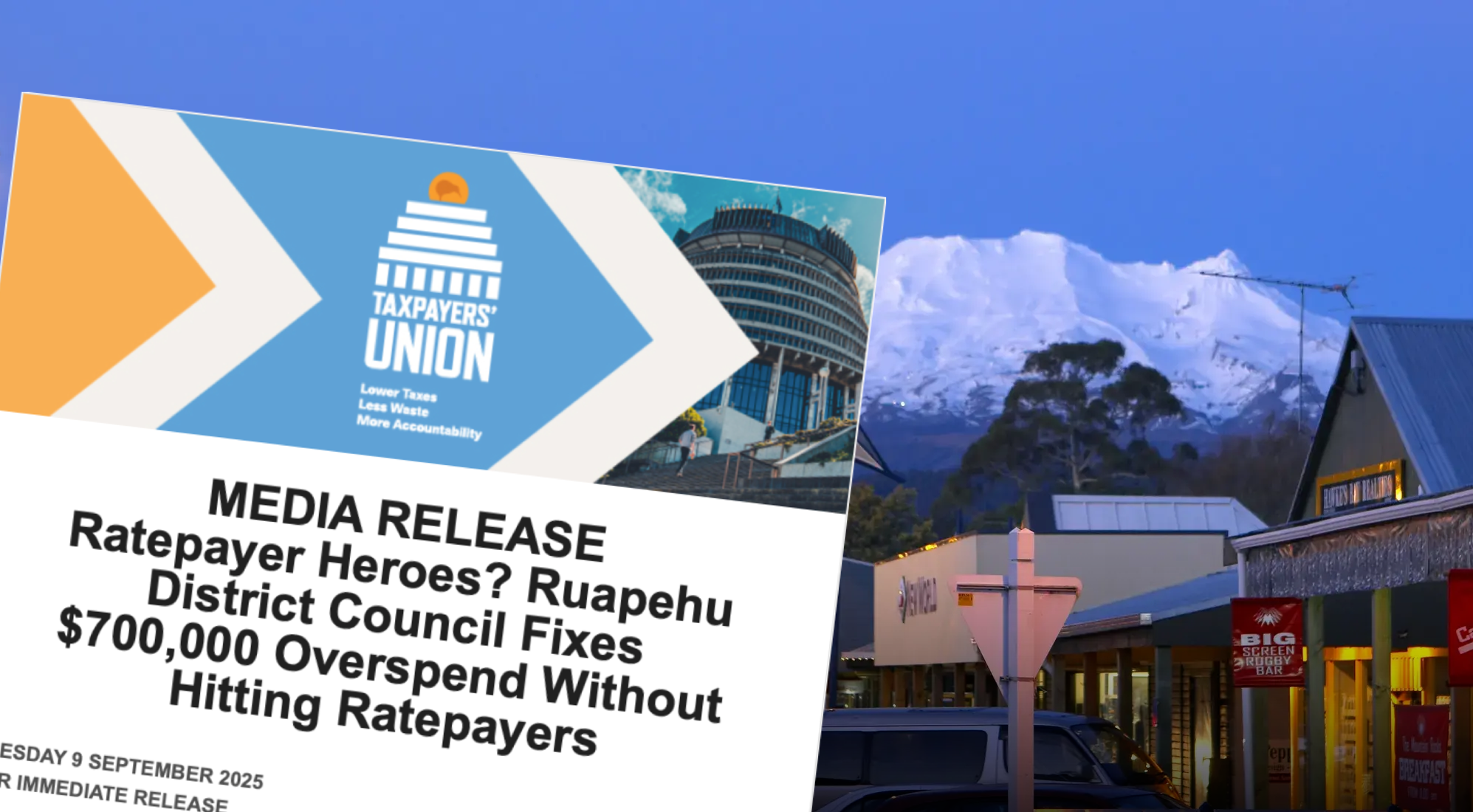By Jonathan Milne
Copyright newsroom

Ruapehu District Council was hailed a “ratepayer hero” by the Taxpayers’ Union lobby group last week. That’s because the small North Island council offset an unexpected $700,000 overspend by cutting services and infrastructure investment, rather than hiking rates and fees to cover it.
But, highlighting the difficult balancing act between high rates and even higher debt levels, Newsroom has now confirmed Ruapehu is one of the first councils to bust its debt cap.
That leaves the Taxpayer’s Union with rather red faces, arguably. “It’s disappointing,” says spokesperson Tory Relf.
In a new development on Wednesday afternoon, Auditor-General Grant Taylor tabled a report in Parliament warning about council debt reaching record levels. He said Ruapehu, Waitaki and Stratford had all breached their caps last year.
“Some councils’ debt levels are getting close to the Local Government Finance Agency’s debt limits. This creates a risk that, in an emergency (such as an earthquake or a severe weather event) or an unexpected event (such as asset failure), these councils would not be able to borrow enough funds to respond quickly.”
New Zealand councils have some of the highest debt levels in the world, according to ratings agency S&P Global, but the Government would prefer they control rates by borrowing still more.
Across 78 city, district and regional councils, borrowing has risen from about $15b in 2017, to $20b after Covid, and $35.5b now. Local Government Funding Agency analysis of councils’ borrowing plans indicates it will hit about $40.2b next year.
Nearly half the 1000 respondents to the Newsroom local candidates survey say they would borrow more money, if elected; that contrasts with 30 percent who say they would vote to raise rates.
Some are alarmed. Kāpiti Coast council candidate Jackie Elliott says council revenues are up only 42 percent around the country, but debt has risen 226 percent as the Government backs increased Local Government Funding Agency debt ceilings.
Manawatū district councillor Alison Short is calling for a new debt cap instead of the Government’s proposed rates cap; Hamilton mayoral candidate Roma Tupaea-Warren says we’re creating an intergenerational debt burden.
Wairoa mayor Craig Little urges caution on more borrowing. “Go carefully, because it’s like a house loan, you will get to a stage where repaying becomes impossible.”
Hastings council candidate Rion Ruben says his district is carrying a heavy debt load, and there are no easy answers. “The next council will need to make deeply unpopular choices and be clear about the limits of what council can provide,” he says. “We cannot afford to make false promises, because every time we fail to deliver on them, the wedge between the community and the council only grows wider.”
Christchurch mayoral challenger Sara Templeton says the council needs to phase out borrowing for day-to-day renewals of infrastructure, so it can reduce debt and related costs while getting the same amount of work done.
Ruapehu council’s draft financials indicate it was in breach of its internal debt ceiling at the end of the 2025 financial year. Its gross debt of $71.1m was a debt-to-revenue ratio of 135 percent – a matter certain to cause its auditor concern.
It remained beneath the Local Government Funding Agency cap of 175 percent.
The council had made the decision a few years back to bring all its drinking water schemes up to modern standards, mayor Weston Kirton said, and had used debt to achieve it. When the council’s waters assets are transferred to a new council-controlled organisation, created jointly with Whanganui, then that debt will be transferred to it.
The pressure on its capital programme will increase further, after the council discovered it had overspent its budget on consultants, toilet cleaning, facilities maintenance and painting. They’d pulled that back by cutting wastewater projects, as well as operational and financing costs.
Last week, the Taxpayers’ Union applauded Ruapehu District Council for “some good old-fashioned fiscal responsibility” in finding savings, rather than hiking rates.
The councils with the heaviest debt-to-revenue burdens
But Kirton says the pressures on council balance sheets are far more complex than a simple “good versus bad spending” narrative.
Local councils have been required to take on significant debt to meet Government mandates – water services are a prime example, he says, making up 53 percent of council debt.
Another 25 percent of the debt is for land transport. Ruapehu has none of the “frilly” spending that’s often criticised.
Servicing the debts isn’t easy, when the council will have a revenue base of just $55.9 million this year, $34.4m rates, $16.9m subsidies and grants, and $3.9m from fees and charges.
“This balance – mandated infrastructure investment on one side and a narrow revenue stream heavily dependent on rates income on the other – shows that council finances cannot be reduced to heroes and villains,” Kirton says. “It’s a structural challenge that requires nuanced solutions.
“Ratepayers are concerned about council debt because it directly affects affordability at a time when household budgets are already under strain.”
On learning from Newsroom of Ruapehu’s borrowing blowout, Relf tempers the lobby group’s position. She says it makes sense to borrow to invest in infrastructure, but not when a council is so close to its borrowing limits.
“It’s disappointing to see Ruapehu District Council, which only last month moved to rein in a projected overspend and spare residents higher charges, fall into the same trap as so many others,” she says.
“Had spending been brought under control earlier, the council wouldn’t have been borrowing just to cover basics, and it wouldn’t now be forced to breach its debt cap for infrastructure investment.”



